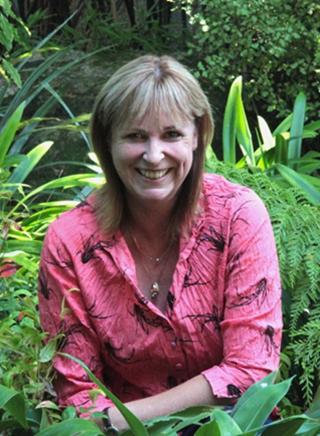|
Conference
2012
"Waikato Bouquet"
The annual RNZIH NZ Gardens Trust conference was held in Hamilton 27-29 April 2012.
The Conference commenced with the RNZIH Banks Memorial Lecture on Friday evening 27 April and concluded at 4pm Sunday 29 April.
Hosted by the Gordonton Woodlands Trust the conference followed the format of garden visits interspersed with presentations by speakers on a variety of topics. Included was a visit to the Hamilton Gardens and hearing Peter Sergel speak about their development.
On Sunday morning a facilitated workshop gave members the chance to air their hopes, views, or concerns about the operation of the Trust.
The venue was the Novotel Hotel, 7 Alma St, Hamilton.
RNZIH
ANNUAL GENERAL MEETING
This Annual General Meeting was held at the NZGT conference venue.
The 2012 RNZIH Awards were presented following the AGM and preceding the Banks Memorial Lecture.
Venue: Fairfield Function Room, Novotel Hotel, Hamilton.
Date: Friday, 27 April 2012.
Time: 6.00 pm.
Agenda:
- Apologies/In Memoriam
- Minutes of the 2011 AGM
- Matters arising from the Minutes of the 2011 AGM
- Chairman’s Report
- Statement of Accounts for 2011 and Budget for 2012
- Branch Reports
- Election of Officers
- General Business:
8.1 Subscriptions
8.2 NZ Gardens Trust
8.3 RNZIH Notable Trees Trust
8.4 RNZIH Education Trust
8.5 NZ Plant Collections Register
8.6 Publications and website
8.7 Other
RNZIH AWARD PRESENTATIONS - 6.45 pm.
BANKS MEMORIAL LECTURE (a free public lecture)
By Dr Marion MacKay
 The Banks Memorial Lecture
is a free lecture open to the public. It commemorates Sir
Joseph Banks, botanist on Captain Cook's first voyage to New Zealand.
During a later distinguished scientific career, he was Director
of the Royal Botanic Gardens at Kew, London. The Banks Memorial Lecture
is a free lecture open to the public. It commemorates Sir
Joseph Banks, botanist on Captain Cook's first voyage to New Zealand.
During a later distinguished scientific career, he was Director
of the Royal Botanic Gardens at Kew, London.
Venue: Fairfield Function Room, Novotel Hotel, Hamilton.
Date: Friday, 27 April 2012.
Time: 7.00-8.00 pm.
Cost: Free.
Abstract:
In the Bank’s Memorial Lecture for 2012 Marion MacKay discussed two conservation projects, one on native flora and one on exotic flora, both based at Pukeiti near New Plymouth. The native flora project relates to the 350 hectares of native forest at Pukeiti which has been regenerating for about 50 years. Since 2006 a series of monitoring plots have been installed and a survey of flora conducted, from which Marion has published the book Plants of Pukeiti Forest. The exotic flora project relates to the collection of Vireya Rhododendron at Pukeiti, which is housed in the cultivated garden area that sits within the forest. This collection is one of the most extensive world-wide and contains species of conservation interest. In combination with a research team (Marion MacKay, Ahmed Fayaz, and Sujana Reddy all of Massey University, Sue Gardiner and Claudia Wiedow of Plant & Food Research and Graham Smith of Pukeiti), Marion has been studying this collection to determine its international conservation potential. Both projects were described, with observations on conservation issues, and action for future conservation proposed.
Biography:
Marion MacKay has been studying plants for many years in her role as scientist at Massey University. Having graduated with a BHortSc (Hons) in 1981 she soon afterwards started lecturing in Amenity Horticulture at Massey and for many years taught degree and diploma students in Horticulture.
Over the period 1989-1996 Marion completed her PhD on the plant collection at Eastwoodhill, and as part of that study considered exotic flora in plant collections in New Zealand. In 1997 Marion was made a Fellow of the RNZIH for her work on plant collections. Subsequent to that work she became involved at Pukeiti and the two projects described in this lecture evolved.
Marion now teaches plant topics to students majoring in Environmental Management and oversees the postgraduate programme in that subject. As a result of the native flora project Marion is now involved with a 300 hectare site near Port Waikato and is conducting a flora study on that site. With respect to exotic flora and conservation, the rhododendron project is on-going, and Marion is also part of the Institute’s team who are undertaking the Cultivated Plants Project.
Top
of page |


 The Banks Memorial Lecture
is a free lecture open to the public. It commemorates Sir
Joseph Banks, botanist on Captain Cook's first voyage to New Zealand.
During a later distinguished scientific career, he was Director
of the Royal Botanic Gardens at Kew, London.
The Banks Memorial Lecture
is a free lecture open to the public. It commemorates Sir
Joseph Banks, botanist on Captain Cook's first voyage to New Zealand.
During a later distinguished scientific career, he was Director
of the Royal Botanic Gardens at Kew, London.